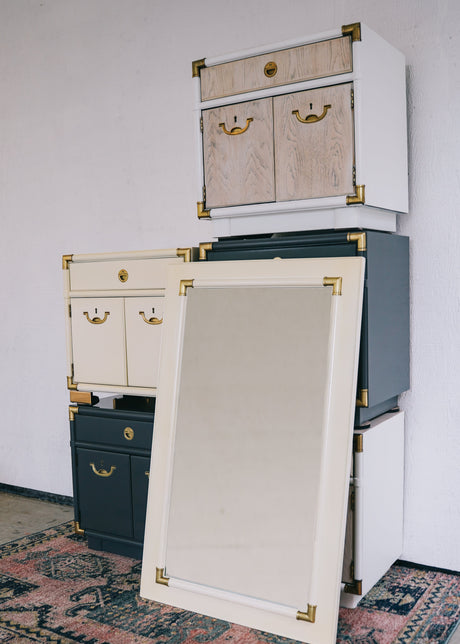Throughout history, mirrors have served not only as practical tools for grooming but also as symbols of beauty, wealth, and power. The evolution of mirrors, particularly vintage mirrors, tells a captivating story of human ingenuity and creativity. Let's delve into the fascinating origins of vintage mirrors to uncover the secrets behind these timeless and reflective treasures.
The Early Beginnings of Mirrors
From polished stones to metal alloys, mirrors have taken various forms throughout history. The early civilizations that first discovered reflective surfaces laid the groundwork for the mirrors we use today.
Key points:
- Ancient Egyptians are credited with developing some of the earliest forms of mirrors using polished copper and bronze.
- Ancient Greeks and Romans improved mirror-making techniques by using silver and gold coatings on glass surfaces.
- Chinese artisans created mirrors from polished bronze as early as the 8th century BCE.
The Renaissance Era: A Golden Age for Mirrors
The Renaissance period marked a significant turning point in mirror production and design. Mirrors became highly sought after as luxurious decorative items, reflecting the wealth and status of their owners.
Notable developments during the Renaissance:
- Venetian glassmakers pioneered the production of high-quality mirrors with the introduction of the glassblowing technique.
- Elaborate frames and intricate engravings became popular features of mirrors during this period.
- The Hall of Mirrors at the Palace of Versailles, constructed in the 17th century, showcased the grandeur of mirrors as symbols of power and opulence.
The Art Nouveau Movement and Beyond
During the late 19th and early 20th centuries, the Art Nouveau movement sparked a revival of interest in decorative arts, including mirror design. Art Nouveau mirrors are characterized by their flowing lines, intricate patterns, and nature-inspired motifs.
Features of Art Nouveau mirrors:
- Organic shapes and asymmetrical designs that deviated from traditional styles.
- Embellishments such as floral motifs, whiplash curves, and stained glass accents.
- Artisans and designers like Louis Comfort Tiffany and Hector Guimard were instrumental in popularizing Art Nouveau mirror designs.
The Enduring Allure of Vintage Mirrors
Despite the advancements in mirror technology, vintage mirrors continue to captivate collectors and enthusiasts with their timeless appeal and unique craftsmanship. Whether ornately gilded or elegantly understated, vintage mirrors serve as windows to the past, reflecting the artistry and ideals of bygone eras.
Reasons for the enduring popularity of vintage mirrors:
- Their historical significance and connection to specific time periods and design movements.
- Their ability to add character and charm to modern interiors, blending seamlessly with diverse decorating styles.
- The craftsmanship and attention to detail exhibited in vintage mirrors are often unmatched in mass-produced contemporary pieces.
The Value of Vintage Mirrors in the Modern World
As we look back on the origins of vintage mirrors, we gain a deeper appreciation for these exquisite objects that have stood the test of time. In today's fast-paced world, owning a vintage mirror allows us to not only infuse our spaces with history and elegance but also to connect with the craftsmanship and artistry of generations past.
Ways vintage mirrors enhance modern interiors:
- Creating focal points and adding depth to rooms with their reflective surfaces.
- Elevating the aesthetic appeal of any space with their unique designs and timeless allure.
- Providing a sense of nostalgia and storytelling through their intricate details and craftsmanship.

